Is a banana a fruit or a vegetable? The answer might surprise you and change how you see this common snack. We’re about to dive into the botanical world and reveal the true nature of bananas.
Botanically speaking, bananas are berries. Yes, you read that right. We often think of berries as small and round, but the botanical definition focuses on how they grow. This guide will explain why bananas, with their unique shape and size, fall into the berry category. We’ll also touch on the culinary side, where things get even more interesting.
We’re here to clear up any confusion about bananas. Whether you’re interested in the science behind fruit classification or just love a good kitchen fact, this discussion is for you. Ready to see bananas in a whole new light? Let’s find out together why they’re not just fruits but also berries.
- Related article: Comparing Fruits vs Vegetables
5 Key Takeaways on Is Banana a Fruit or Vegetable
- Bananas are classified as berries because they develop from a single flower with one ovary and have a three-layer structure.
- Although botanically berries, bananas are considered fruits in everyday language and culinary contexts, similar to tomatoes.
- Bananas fall under the berry category, which includes fruits that grow from a single bloom and contain multiple seeds.
- The small black spots in bananas are seeds, but in commercial bananas, these seeds are usually non-viable, and the plants are propagated through cloning.
- Bananas grow on large herbaceous plants, not trees, making them part of the world’s largest herb family.
Is Banana a Fruit or Vegetable?
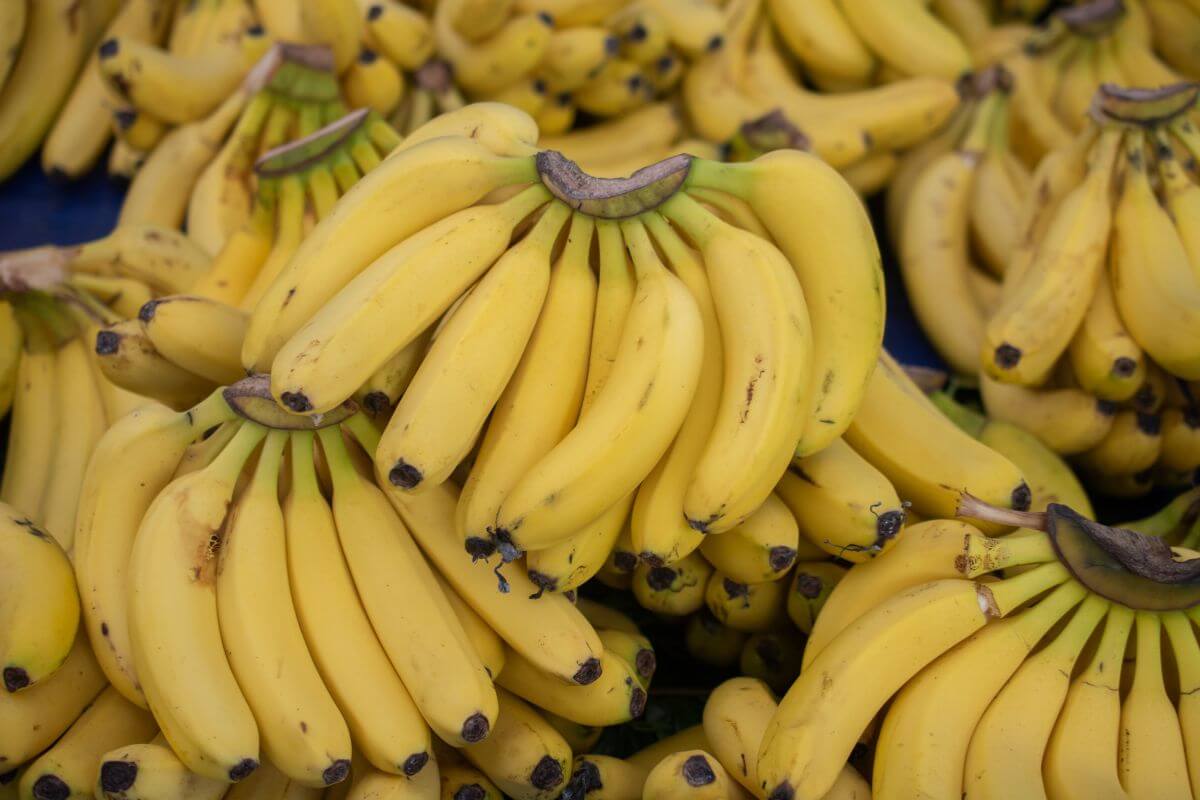
Bananas are considered berries or simple fruits from a botanical point of view. This might be surprising because we often think of berries as small, round fruits.
The botanical definition of a berry includes fruits or a flowering plant’s reproductive organs. This means that even though bananas are long and curved, they meet the berry criteria because they develop from a single flower and contain one ovary.
Botanists can sometimes disagree on the exact classification of some fruits, which can add to confusion.
Here are some simple facts to clear up the debate surrounding the banana:
- Botanical Definition – Bananas are berries because they meet the botanical criteria of growing from one flower with one ovary.
- Culinary Perspective – In cooking, the lines between fruits and vegetables can get blurry. For example, tomatoes are classified as fruits by botanical standards but they are commonly used as vegetables. While specifically berries, bananas can fall under the definition of fruits in culinary tems.
Why Are Bananas Considered Berries: A Detailed Explanation
There are two types of fruit: Fleshy fruits and dry fruits. Dry fruits are those that are commonly not considered fruits, such as legumes and nuts. Bananas have soft skin and a fleshy layer in the middle.
Bananas and other fruits that fall under the berry classification rarely contain the word “berry” in their name and aren’t typically thought of as berries.
Fruits are broken down into nine different subcategories:
- Aggregate fruit (raspberries)
- Berries (bananas)
- Capsules (orchids)
- Drupes (peaches)
- Grains (rice)
- Legumes (beans)
- Multiple fruits (pineapple)
- Pomes (apples)
- Nuts (acorns)
Bananas are classified as berries, just like blueberries. Berries are composed of a three-layer structure with:
- The outer skin named the exocarp
- A fleshy middle layer referred to as the mesocarp
- An inner layer with seeds, known as the endocarp
Berries are born from a single bloom with a single ovary and must contain at least two seeds. So, by its composition, the banana is a berry!
Do Bananas Have Seeds?
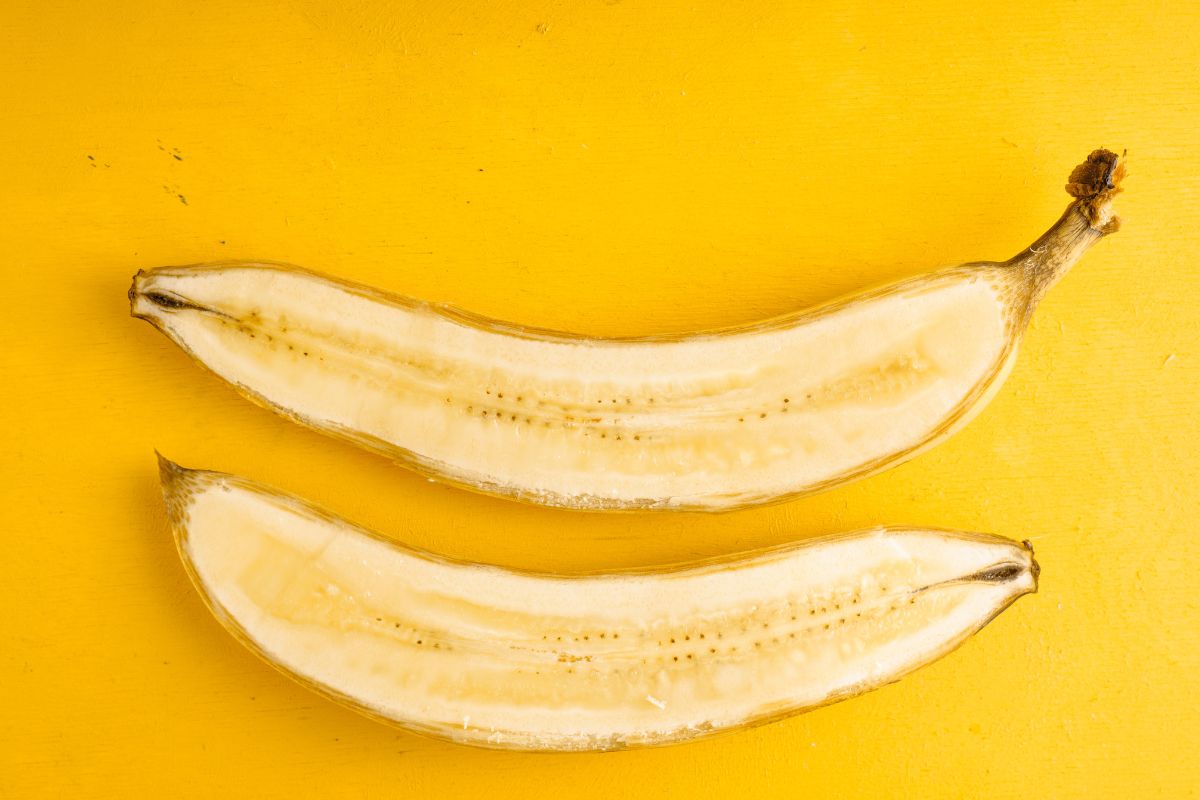
Now, about those “seeds” in your bananas. The small black spots you see in a banana are its seeds. However, in the bananas we eat, these seeds are tiny and not used for reproduction. That’s why bananas are grown from cuttings (clones) rather than seeds.
Banana peppers also have their unique traits:
- Ripeness – Unlike most fruits, banana peppers can be eaten at any stage, from green to red. Some people prefer the red ones for their sweeter taste, but it’s all about what you like.
In a nutshell, bananas are not only delicious and nutritious fruits but also botanical berries and part of the world’s largest herb. This mix of science and everyday language shows how fascinating the world of plants can be.
What Are the Different Varieties of Bananas?
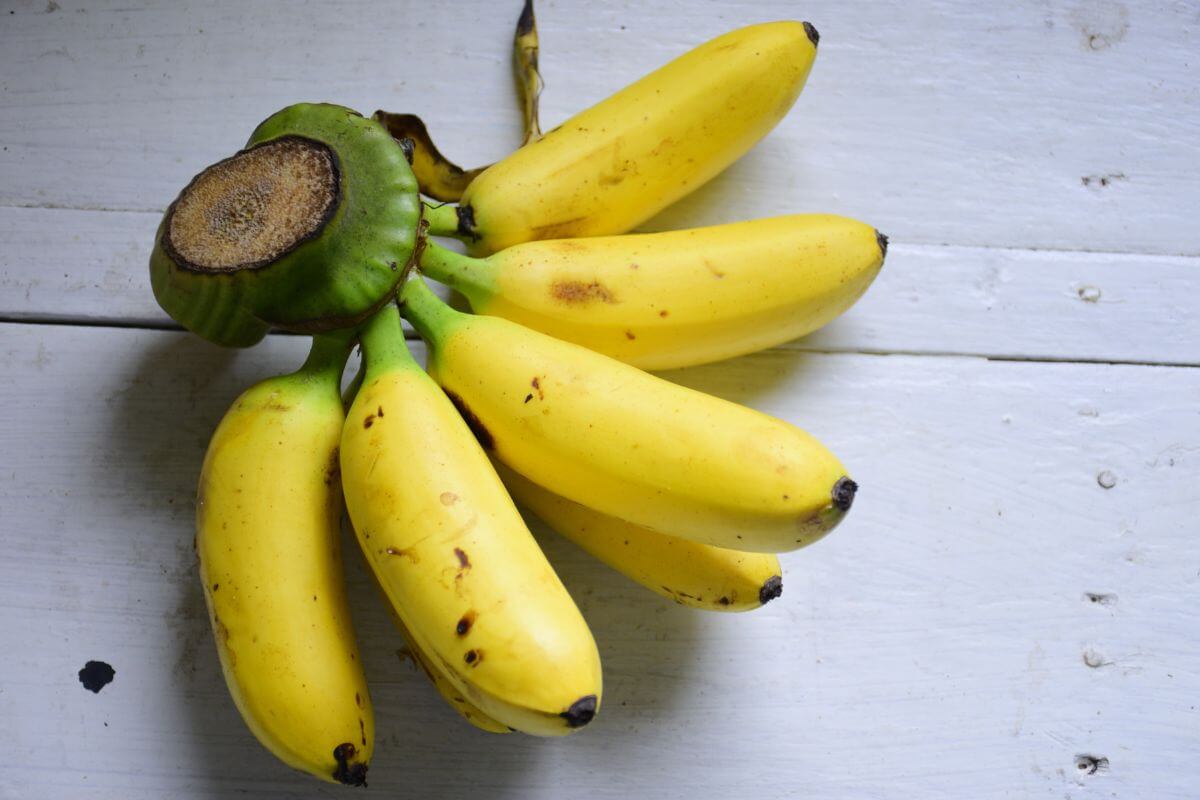
Bananas come in more than 1000 varieties, with the Cavendish being the most common and the one we usually see in stores. This type is grown specifically for sale around the world. But, it wasn’t always the Cavendish that people ate.
In the late 1800s, the Gros Michel was the banana of choice in North America and Europe. However, a serious fungus problem nearly wiped out all Gros Michel banana plants by the 1940s. This forced growers to switch to the Cavendish, which had a natural defense against the fungus.
Here are some different kinds of bananas you might find:
- Apple Banana – Sweet and pinkish, grown in Hawaii.
- Blue Java (Ice Cream Banana) – Known for its blue skin and creamy texture.
- Burro Banana – Has a lemony flavor and squared sides.
- Gros Michel – The original banana, now more common in Africa, Southeast Asia, and the Pacific Islands.
- Lady Finger – Shorter and sweeter than the Cavendish.
- Macabu – Turns black when ripe and is very sweet.
- Niño – A small, finger-sized banana.
- Cavendish – Less sweet and flavorful than the Gros Michel, but resistant to the disease that wiped out the Gros Michel in many areas.
- Red Banana – A variety that stands out for its sweeter taste and gummy texture.
- Blue Bananas – These bananas, though not truly blue, exhibit a blue color that is more pronounced when they are not yet ripe.
These bananas offer a range of flavors and characteristics. Some, like the Gros Michel, are less common now because of diseases. You might find a wider variety of bananas in Asian and African stores. Also, when different banana plants mix, it doesn’t change the fruit you eat.
What Are the Health Benefits of Bananas?
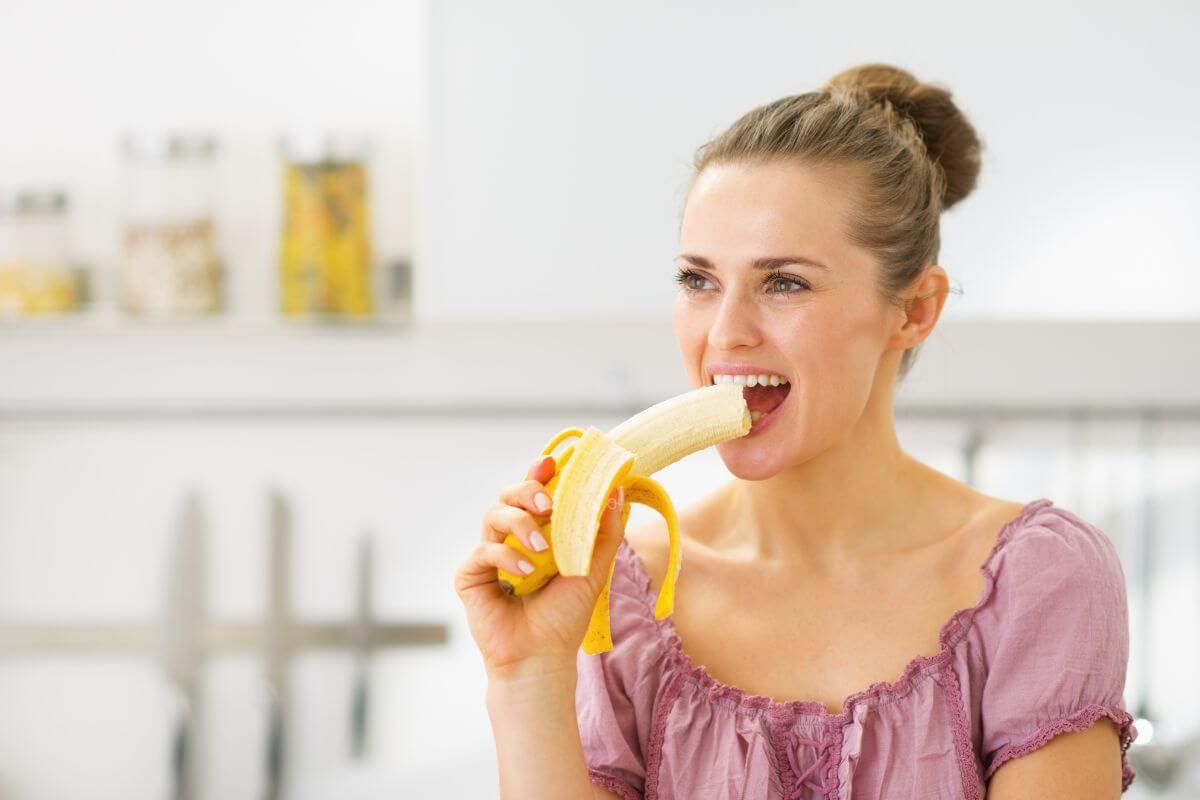
Bananas have been the subject of much discussion among nutritionists, with some favorable to including bananas in diets and some preferring other fruits. A banana is indeed relatively low in calories with a medium banana racking up only approximately one hundred calories.
On the positive side, the banana contains little or no cholesterol, fat, or sodium, and is an excellent source of vitamin C, vitamin B6, fiber, and potassium.
On the negative side, they contain approximately 14 grams of sugar and 27 grams of carbohydrates that eventually also turn to sugar once they hit the bloodstream.
Still, medical research has indicated several health benefits.
Banana peels have protective chemicals in them called antioxidants, among other benefits listed below.
1. Bananas May Lower Blood Sugar
Eating bananas can be tricky for some people because of how they affect blood sugar. It’s all about the type of banana and how ripe it is. Here’s what happens:
- The soluble fiber in all bananas helps create a kind of gel in your gut. This slows down digestion and keeps you feeling full.
- Resistant starch in unripe, green bananas isn’t easy to digest. This adds to the slowing effect when combined with fiber.
- Different sugars in bananas, like fructose, glucose, and sucrose, affect blood sugar levels in various ways.
For some, eating any kind of banana leads to a quick rise in blood sugar. But others might find that unripe bananas, with their lower glycemic index, have a gentler effect.
2. Bananas May Aid in Digestive Health
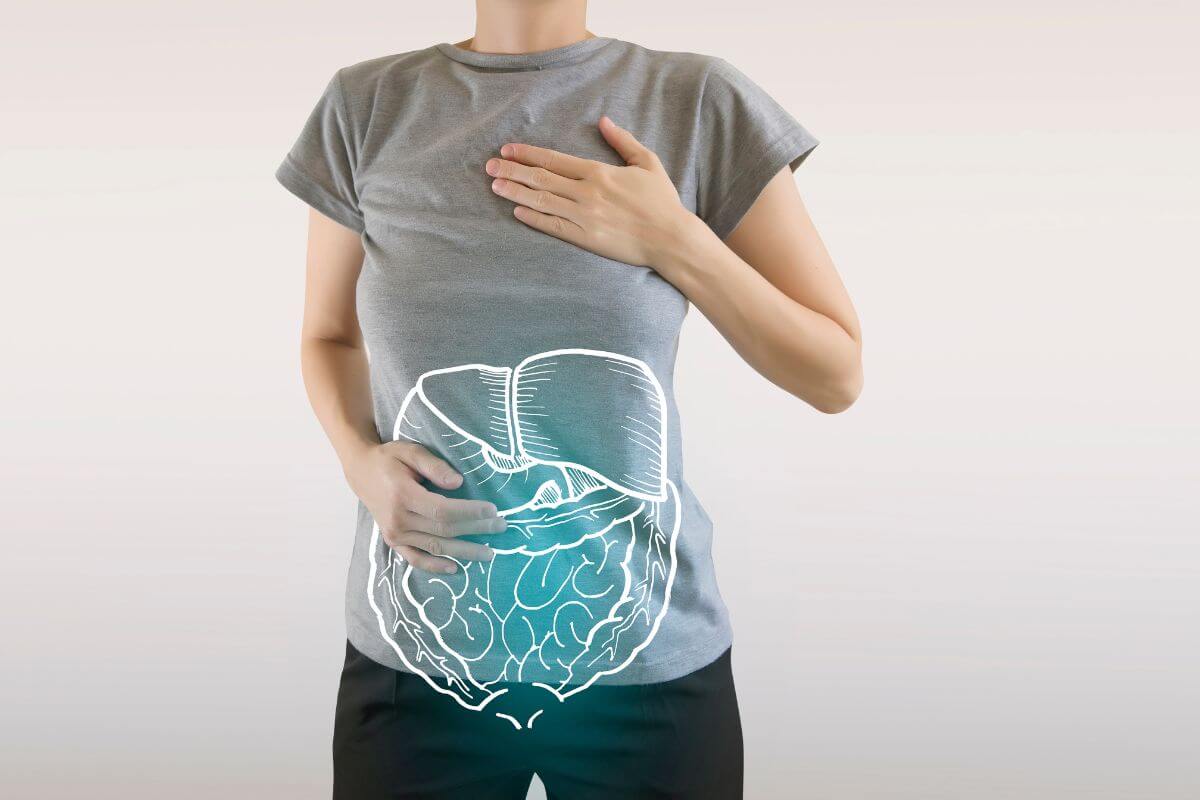
Bananas are great for your digestion because they’re full of fiber. A medium-sized banana has around 3 grams of fiber. This fiber helps your gut work better.
The resistant starch in bananas acts like a prebiotic. It goes all the way to your colon without getting digested. There, it feeds the good bacteria in your gut.
Bananas also have pectin fiber. This type of fiber makes it easier to go to the bathroom by softening your stool.
Here are a few more things about bananas and how your body digests them:
- Ripe bananas are easier to digest because the fiber in them has already started to break down.
- The fiber in bananas turns into simple sugars that your body can use.
- Some people might find it hard to digest bananas that are still green or not ripe.
- Bananas have resistant starch, which is why they don’t make your blood sugar rise quickly.
Eating bananas, especially when they’re ripe, is a smart way to get more fiber and nutrients that are good for your gut.
3. Bananas May Help with Weight Loss
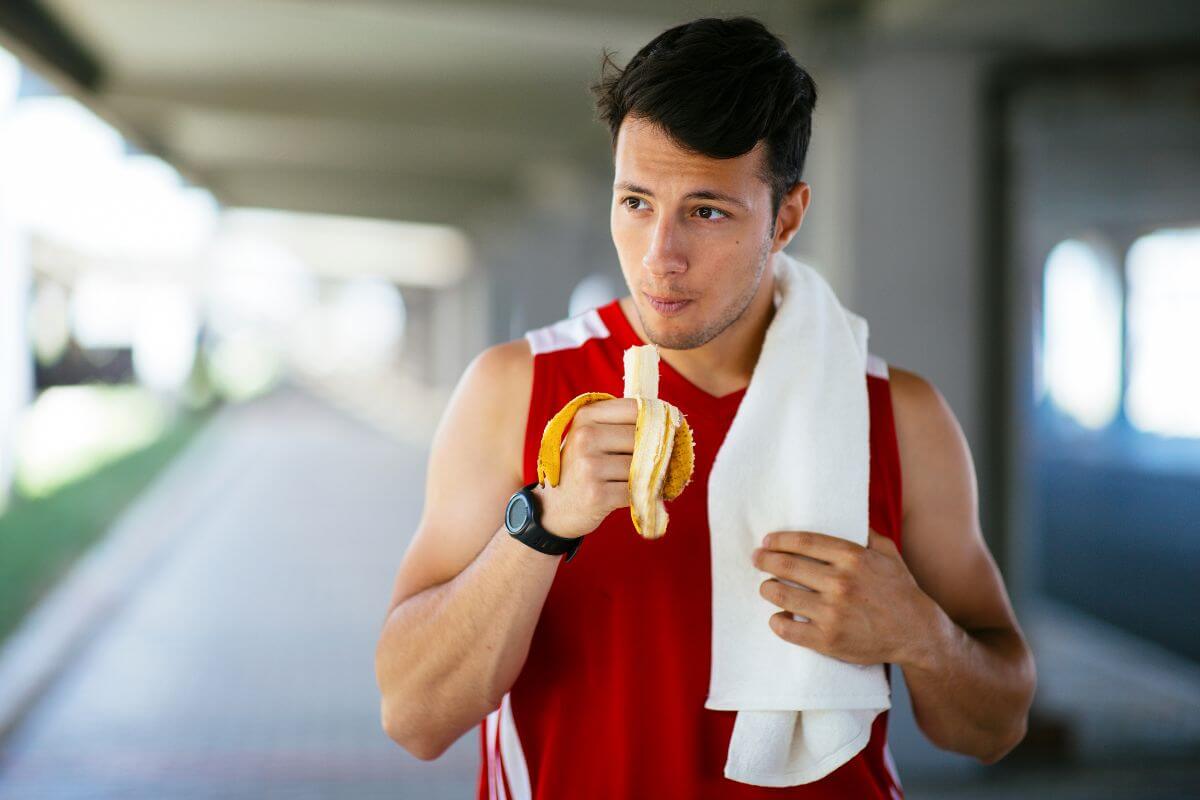
Thinking about eating a banana to keep you going during a workout or as a snack? Bananas are great for making you feel full and satisfied without loading you up with too many calories. They’re also full of good stuff like fiber and resistant starch.
This combo of nutrients means bananas are perfect for taming your hunger and not adding extra weight. They make a smart snack choice because they help you manage your hunger. Plus, they won’t leave you craving more food.
Some say having a banana before a short run might not be needed to power you through, especially if you’re looking to shed some pounds. When it comes to dropping weight, what really matters is how many calories you eat overall, not just whether you munch on bananas.
That doesn’t mean you should ditch bananas. They’re a key player in a healthy diet, thanks to their mix of vitamins and minerals. Despite some debates, science shows that bananas are not the bad guys when it comes to losing weight.
4. Bananas May Protect Your Heart Muscle
Eating bananas is a simple way to boost your heart health. These fruits are packed with potassium and magnesium, two essential minerals for keeping your heart strong and your blood pressure in check.
Here’s a breakdown of how bananas support your heart:
- Potassium – Bananas are well-known for their potassium content. With about 10% of your daily recommended intake in just one banana, this mineral is key to maintaining healthy blood pressure and heart function.
- Magnesium – In addition to potassium, bananas also offer around 8% of the daily recommended intake of magnesium. This mineral is equally vital for heart health, as it helps prevent high blood pressure and heart disease.
It’s important to get a balance of these nutrients to support your heart without overloading on potassium, which can be harmful in large amounts. If you have concerns about your potassium levels, it’s a good idea to talk to a healthcare provider.
5. Bananas May Improve Kidney Health
Potassium plays a key role in supporting kidney health. Studies show that for people in the early stages of chronic kidney disease (CKD), getting enough potassium can help slow down the disease’s advance.
If you have CKD, it’s important to watch how much high-potassium food you eat, like bananas and watermelon. Here are some tips to manage your potassium intake:
- Bananas – The amount of potassium in bananas goes up as they ripen. Green bananas have less sugar and fewer nutrients than ripe ones.
- Insulin Response – Ripe bananas can cause a quick rise in insulin, but this isn’t usually a problem for people with healthy kidneys or those without diabetes.
- Get Personalized Advice – It’s best for CKD patients to talk to a nutritionist or doctor about how to tailor their diet to their specific needs.
This guidance aims to help you keep your potassium levels in check, supporting your overall health as you manage chronic kidney disease.
6. Bananas Are Nutritious and Full of Antioxidants
Filled with dietary antioxidants that fight free radical damage to cells, bananas contain flavonoids and amines. Free radicals are linked to degenerative illnesses and cardiovascular disease.
| Nutrient | Amount per 126g Banana |
|---|---|
| Calories | 112 calories |
| Fat | No fat |
| Protein | 1 gram |
| Carbohydrates | 29 grams |
| Fiber | 3 grams |
| Copper | 11% DV |
| Folate | 6% DV |
| Magnesium | 8% DV |
| Niacin | 5% DV |
| Potassium | 10% DV |
| Riboflavin | 7% DV |
| Vitamin C | 12% DV |
Mixing ripe bananas with flavanol-rich fruits such as berries, grapes, and cocoa can increase the amount of flavanols you get.
Here’s the scoop on banana ripeness and its impact:
- Overripe bananas are antioxidant powerhouses.
- Underripe bananas pack more prebiotics.
- The ripeness of bananas changes how they taste.
So, the next time you’re making a smoothie, consider the ripeness of your bananas and how it might affect the flavor and health benefits.
What Are Other Facts About Bananas?
What else is there to learn about bananas? Here are a couple of facts you should find interesting.
| Topic | Fact |
|---|---|
| Wild vs. Cultivated Bananas | Wild bananas have large seeds; cultivated bananas are seedless or have tiny seeds due to selective breeding. |
| Banana Flavoring and Genetic Diversity | Artificial banana flavoring resembles the taste of the original bananas. The lack of genetic diversity makes commercially grown bananas susceptible to diseases. Efforts are ongoing to reintroduce genetic diversity. |
| Bananas as Berries | Botanically, bananas are classified as berries. They grow on herbaceous plants, not trees. |
| Seeds in Store-Bought Bananas | Store-bought bananas are typically seedless, though some varieties may have tiny, non-viable seeds. |
| Growing Bananas From Seeds | Growing bananas from seeds can result in plants that may not produce edible fruit. Propagation is typically done through pups or tissue culture. |
| Availability of Different Varieties | Banana variety availability varies by region. Asian and African stores often offer a wider variety. In places like Ireland, some African shops may sell different banana types. |
| Cross-Pollination and Fruit Quality | Planting different banana varieties together doesn’t create hybrid fruits or alter the original fruit. Cross-pollination affects only the seeds, not the fruit. |
| Historical Significance | The banana industry has faced challenges like Panama disease, leading to the decline of certain varieties and the dominance of the Cavendish, the most widely available seedless variety today. |
Is Banana a Fruit or Vegetable Final Thoughts
In the world of plants, bananas are a unique case. While we commonly call them fruits, their botanical classification names them as berries.
This is because they grow from a single flower with one ovary and have a three-layered structure. The difference between how we talk about bananas and their actual botanical category highlights the interesting and sometimes confusing way we describe the natural world.
Bananas are not the only example of this kind of complexity. It’s a reminder of how intricate and unexpected nature can be when it comes to sorting and enjoying what’s around us.
Read more about other fruits and vegetables:


So in other words you just can’t go and buy bananas from the store and get the seeds out and plant them?
Yes, unfortunately store-bought bananas don’t contain the seeds that you can plant and grow your own bananas.